Protein Recipes to Support Muscle Growth and Recovery
Introduction
Protein is essential for muscle growth, repair, and overall health. At NutrientShield, we’ve curated 10 delicious, science-backed high-protein recipes to help you meet your protein needs and support recovery, especially for active individuals. Each recipe includes nutrient profiles, preparation steps, and affiliate links to recommended ingredients. Disclosure: We may earn a commission from purchases made via affiliate links.
[AdSense 728x90 Placeholder - Replace with your ad unit code]
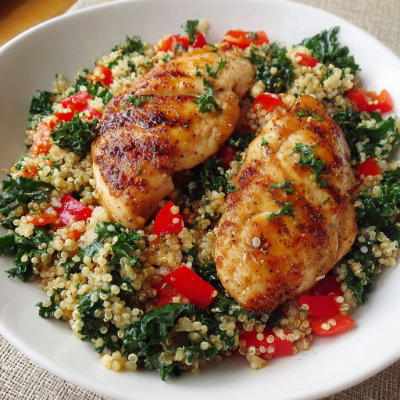
1. Chicken Quinoa Power Bowl
Why It’s Great
Chicken (26g protein per 100g) and quinoa (14g per cup) provide high-quality protein for muscle repair, addressing needs in active populations [1].
Ingredients
- 2 chicken breasts (Buy on Amazon)
- 1 cup quinoa (Buy Quinoa)
- 1 cup kale
- 1 red bell pepper, diced
- 2 tbsp olive oil dressing
Instructions
Grill chicken for 6 minutes per side. Cook quinoa in 2 cups water for 15 minutes. Toss with kale, bell pepper, and olive oil. Serves 2.
Nutrient Highlight
Provides protein (~60g) and vitamin K (~500µg from kale) for muscle recovery and blood clotting [2].
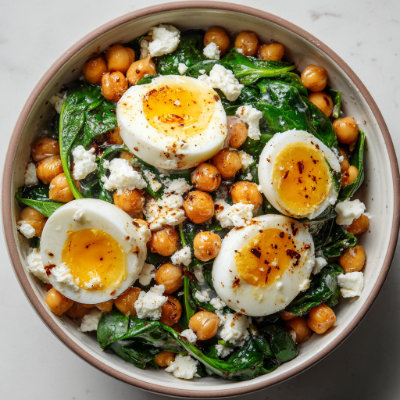
2. Egg and Chickpea Salad
Why It’s Great
Eggs (6g protein per egg) and chickpeas (15g per cup) support muscle growth, addressing protein deficiencies in ~10% of adults [1].
Ingredients
- 4 eggs, boiled (Buy on Amazon)
- 1 can chickpeas (Buy from Thorne)
- 2 cups spinach
- 1/4 cup feta cheese
- 2 tbsp olive oil dressing
Instructions
Cook chickpeas as per can instructions. Slice eggs and toss with chickpeas, spinach, feta, and olive oil. Serves 2.
Nutrient Highlight
Rich in protein (~33g) and fiber (~10g from chickpeas) for muscle and gut health [3].
[AdSense 728x90 Placeholder - Replace with your ad unit code]
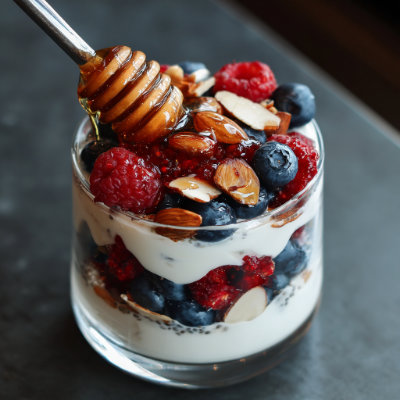
3. Greek Yogurt Berry Parfait
Why It’s Great
Greek yogurt (20g protein per cup) and almonds (7g per 1/4 cup) support muscle recovery, ideal for post-workout nutrition [1].
Ingredients
- 1 cup Greek yogurt (Buy Super Greens)
- 1/2 cup mixed berries
- 1/4 cup almonds, chopped (Buy Walnuts)
- 1 tbsp honey
- 1 tbsp chia seeds
Instructions
Layer yogurt, berries, almonds, and chia seeds in a glass. Drizzle with honey. Serves 2.
Nutrient Highlight
High in protein (~25g) and probiotics for muscle and digestive health [4].
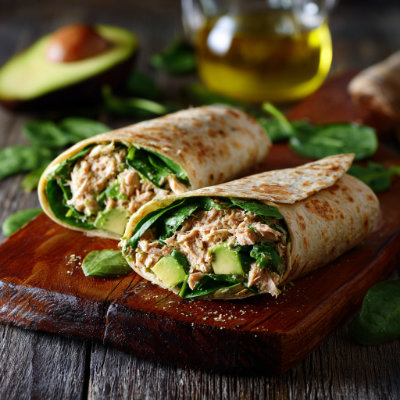
4. Tuna Spinach Wrap
Why It’s Great
Tuna (25g protein per 100g) and avocado (healthy fats) support muscle repair and satiety, addressing protein needs [1].
Ingredients
- 1 can tuna (Buy on Amazon)
- 1 avocado, sliced
- 2 cups spinach
- 2 whole-grain tortillas
- 2 tbsp olive oil dressing
Instructions
Mix tuna, avocado, and spinach. Spread on tortillas, drizzle with olive oil, and wrap. Serves 2.
Nutrient Highlight
Provides protein (~30g) and omega-3s (~0.5g from tuna) for muscle health and inflammation reduction [5].
[AdSense 728x90 Placeholder - Replace with your ad unit code]
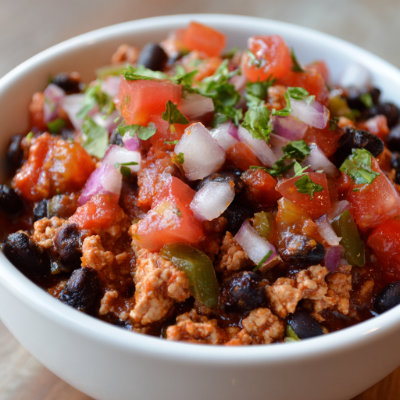
5. Turkey Black Bean Chili
Why It’s Great
Turkey (28g protein per 100g) and black beans (15g per cup) provide high protein for muscle repair, addressing deficiencies [1].
Ingredients
- 1/2 lb ground turkey (Buy on Amazon)
- 1 can black beans (Buy from Thorne)
- 2 tomatoes, diced
- 1 onion, chopped
- 1 tbsp chili powder
Instructions
Sauté onion and turkey, add beans, tomatoes, and chili powder. Simmer for 20 minutes. Serves 2.
Nutrient Highlight
High in protein (~45g) and fiber (~15g from beans) for muscle and gut health [6].
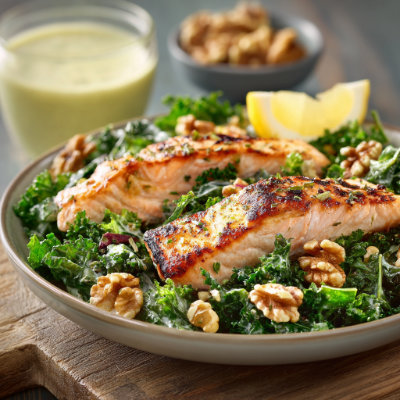
6. Salmon Kale Salad
Why It’s Great
Salmon (25g protein per 100g) and kale (vitamin K) support muscle recovery and bone health, ideal for active lifestyles [1].
Ingredients
- 2 salmon fillets (Buy on Amazon)
- 2 cups kale (Buy Super Greens)
- 1/4 cup walnuts, chopped (Buy Walnuts)
- 2 tbsp olive oil dressing
- 1 tbsp lemon juice
Instructions
Grill salmon for 4 minutes per side. Toss kale, walnuts, olive oil, and lemon juice. Top with salmon. Serves 2.
Nutrient Highlight
Rich in protein (~50g) and omega-3s (~1g from salmon) for muscle repair and inflammation reduction [7].
[AdSense 728x90 Placeholder - Replace with your ad unit code]
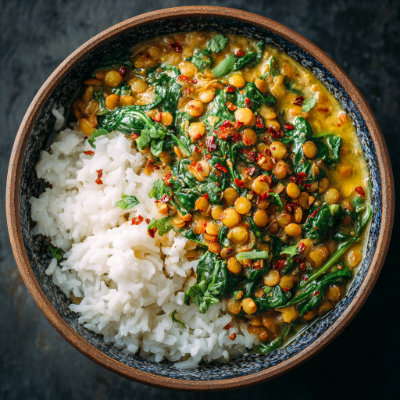
7. Lentil Spinach Curry
Why It’s Great
Lentils (18g protein per cup) provide plant-based protein, supporting muscle repair for vegetarians [1].
Ingredients
- 1 cup lentils (Buy from Thorne)
- 2 cups spinach
- 1 cup coconut milk
- 1 tbsp curry powder
- 1 cup cooked rice
Instructions
Sauté lentils and spinach with curry powder, add coconut milk, and simmer for 15 minutes. Serve over rice. Serves 2.
Nutrient Highlight
High in protein (~20g) and fiber (~15g from lentils) for muscle and gut health [8].
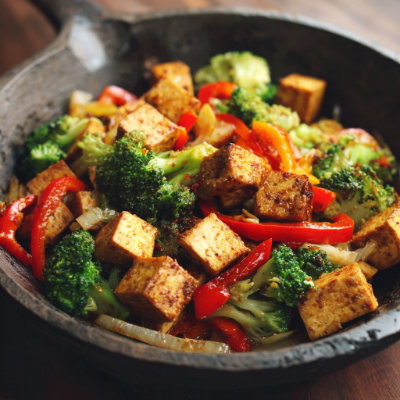
8. Tofu Broccoli Stir-Fry
Why It’s Great
Tofu (10g protein per 100g) and broccoli (vitamin C) support muscle repair and immunity, ideal for plant-based diets [1].
Ingredients
- 1 block tofu, cubed (Buy on Amazon)
- 1 cup broccoli, chopped
- 1 bell pepper, sliced
- 2 tbsp soy sauce
- 2 tbsp olive oil dressing
Instructions
Stir-fry tofu, broccoli, and bell pepper in olive oil. Add soy sauce and cook for 10 minutes. Serves 2.
Nutrient Highlight
Provides protein (~20g) and vitamin C (~80mg from broccoli) for muscle and immune health [9].
[AdSense 728x90 Placeholder - Replace with your ad unit code]
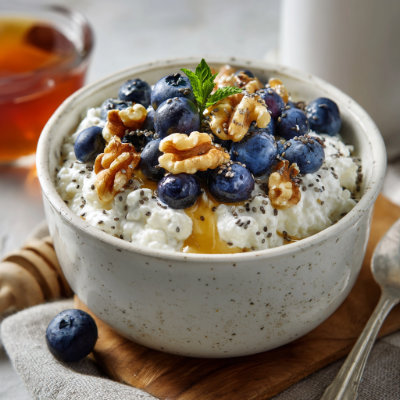
9. Cottage Cheese Fruit Bowl
Why It’s Great
Cottage cheese (20g protein per cup) supports muscle growth, addressing protein needs in active individuals [1].
Ingredients
- 1 cup cottage cheese (Buy Super Greens)
- 1/2 cup blueberries
- 1/4 cup walnuts, chopped (Buy Walnuts)
- 1 tbsp honey
- 1 tbsp chia seeds
Instructions
Mix cottage cheese, blueberries, walnuts, and chia seeds. Drizzle with honey. Serves 2.
Nutrient Highlight
High in protein (~25g) and calcium (~200mg from cottage cheese) for muscle and bone health [10].
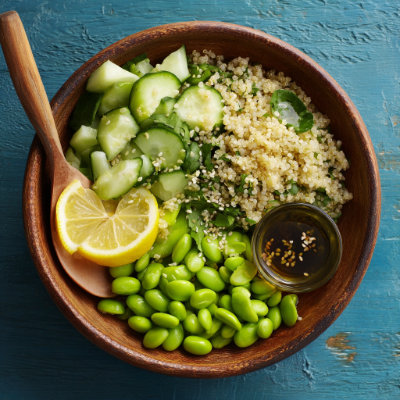
10. Edamame Quinoa Salad
Why It’s Great
Edamame (11g protein per cup) and quinoa (14g per cup) provide plant-based protein, supporting muscle repair [1].
Ingredients
- 1 cup edamame, shelled (Buy on Amazon)
- 1 cup quinoa (Buy from Thorne)
- 1 cucumber, diced
- 2 tbsp olive oil dressing
- 1 tbsp lemon juice
Instructions
Cook quinoa in 2 cups water for 15 minutes. Toss with edamame, cucumber, olive oil, and lemon juice. Serves 2.
Nutrient Highlight
High in protein (~25g) and fiber (~8g from edamame) for muscle and gut health [11].
[AdSense 728x90 Placeholder - Replace with your ad unit code]
Shop Protein & Nutrient Products (Affiliate Links)
Tips for Success
- Use organic protein-rich ingredients for maximum benefits (Shop Super Greens).
- Consult a dietitian before major dietary changes.
- Share your recipes in our Users-Blogs community!
Disclaimer
This content is for educational purposes. Consult a healthcare professional before making dietary changes.
References
- [1] National Institutes of Health, Office of Dietary Supplements. (2025). Protein and Muscle Health. https://ods.od.nih.gov/factsheets/Protein-HealthProfessional/
- [2] Phillips, S. M. (2017). Dietary Protein Requirements in Adults. Frontiers in Nutrition, 4, 13. https://doi.org/10.3389/fnut.2017.00013
- [3] Young, V. R., & Pellett, P. L. (1994). Plant Proteins and Amino Acid Nutrition. Am J Clin Nutr, 59(5), 1203S–1212S. https://doi.org/10.1093/ajcn/59.5.1203S
- [4] National Institutes of Health, Office of Dietary Supplements. (2025). Probiotics in Yogurt. https://ods.od.nih.gov/factsheets/Probiotics-HealthProfessional/
- [5] National Institutes of Health, Office of Dietary Supplements. (2025). Omega-3s in Tuna. https://ods.od.nih.gov/factsheets/Omega3FattyAcids-HealthProfessional/
- [6] National Institutes of Health, Office of Dietary Supplements. (2025). Fiber in Black Beans. https://ods.od.nih.gov/factsheets/DietaryFiber-HealthProfessional/
- [7] National Institutes of Health, Office of Dietary Supplements. (2025). Omega-3s in Salmon. https://ods.od.nih.gov/factsheets/Omega3FattyAcids-HealthProfessional/
- [8] National Institutes of Health, Office of Dietary Supplements. (2025). Fiber in Chickpeas. https://ods.od.nih.gov/factsheets/DietaryFiber-HealthProfessional/
- [9] National Institutes of Health, Office of Dietary Supplements. (2025). Vitamin C in Broccoli. https://ods.od.nih.gov/factsheets/VitaminC-HealthProfessional/
- [10] National Institutes of Health, Office of Dietary Supplements. (2025). Calcium in Cottage Cheese. https://ods.od.nih.gov/factsheets/Calcium-HealthProfessional/
- [11] National Institutes of Health, Office of Dietary Supplements. (2025). Protein in Edamame. https://ods.od.nih.gov/factsheets/Protein-HealthProfessional/
